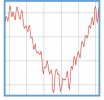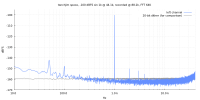- Joined
- Aug 1, 2019
- Messages
- 126
- Likes
- 109
But then how to convey the fact that sound quality of properly designed DAC’s has been above human capabilities for decades.
That's not our experience. The very best DAC we've tested (DO-300) exhibits horrific waveform distortions 20dB above the commonly accepted threshold of headphone listening. With certain tests (complex-generated reverberant tails at pronounced levels, etc.), there are clear differences between DACs in A/B blind trials.



